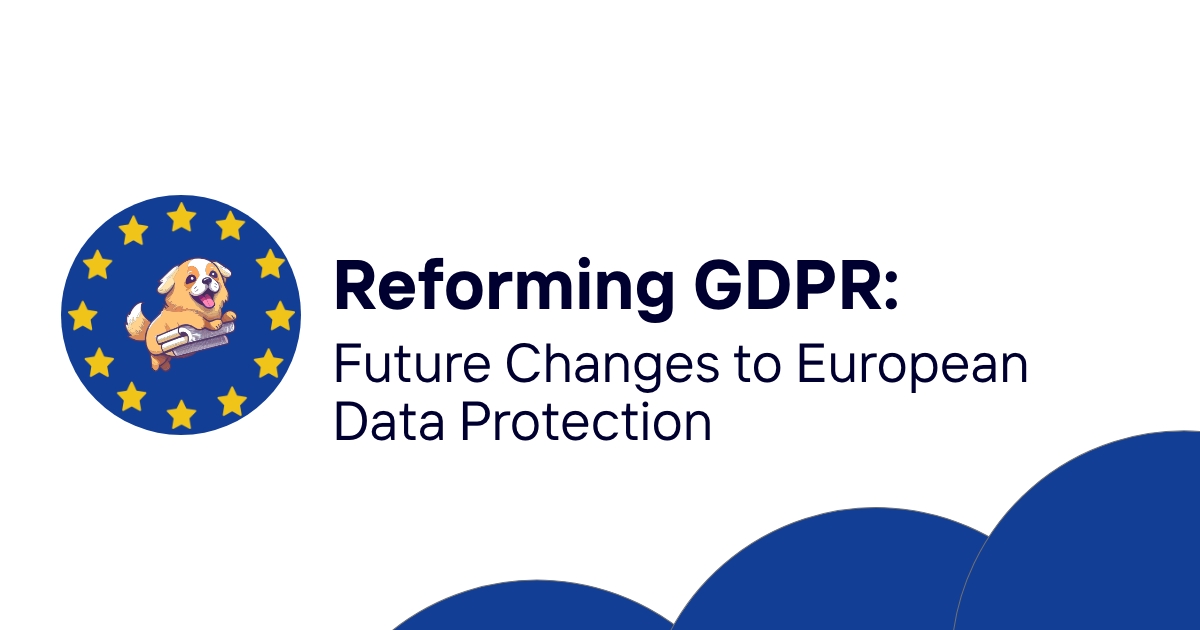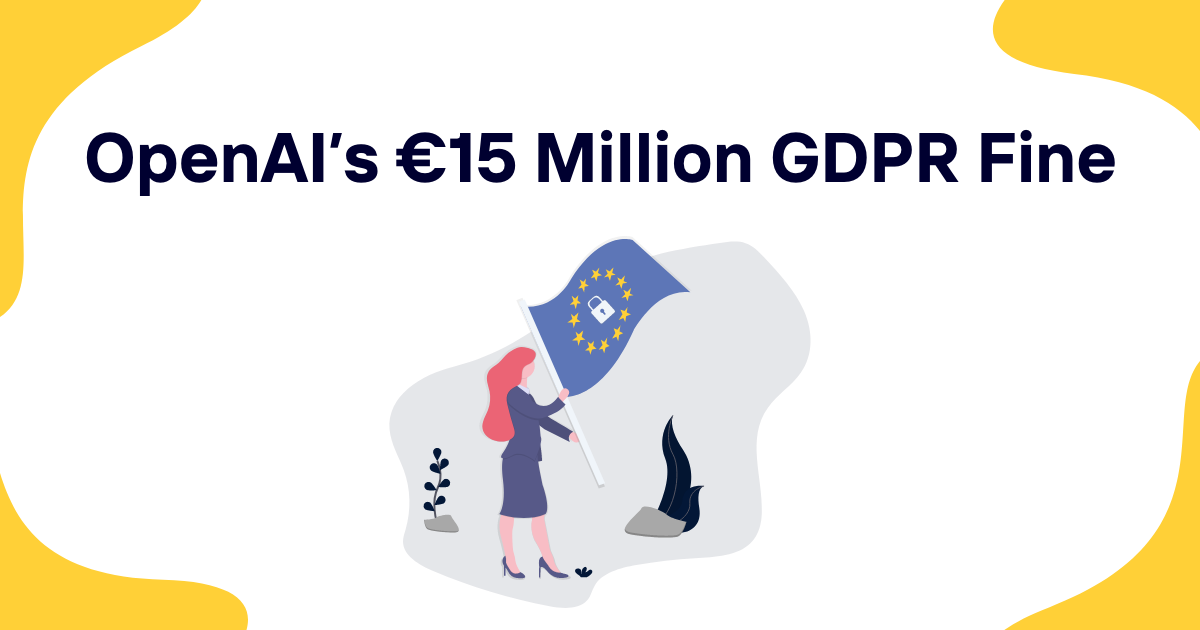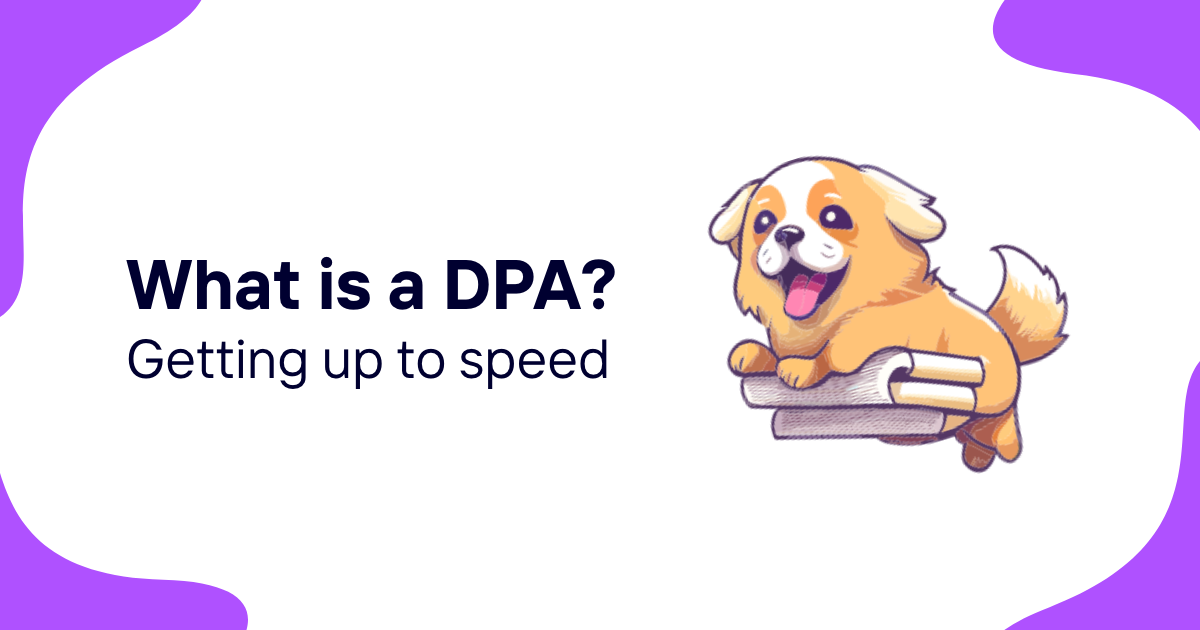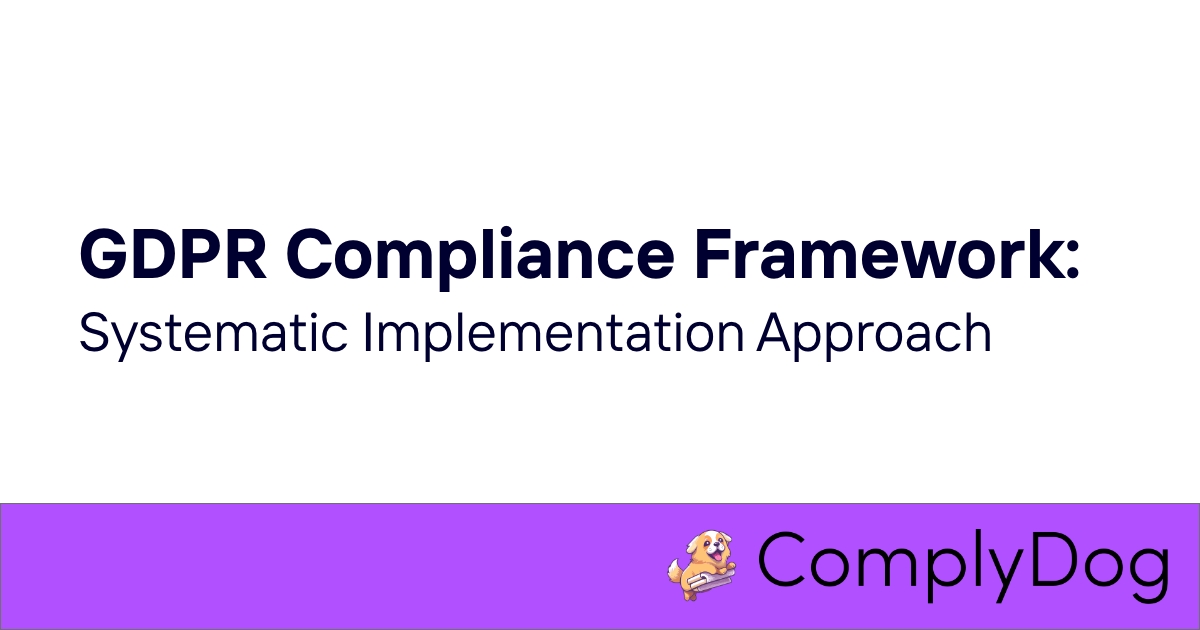The European Union's General Data Protection Regulation has been the gold standard for data privacy since 2018. But here's the thing - it wasn't designed to be static. As digital technologies evolve at breakneck speed and new challenges emerge, policymakers are actively discussing reforms to keep this groundbreaking regulation relevant and effective.
GDPR reform isn't just theoretical chatter anymore. The European Commission has begun serious conversations about updating certain provisions, streamlining compliance processes, and addressing gaps that have become apparent over the past several years. These potential changes could significantly impact how businesses handle personal data and approach compliance strategies.
Table of contents
- Current challenges with GDPR implementation
- Key areas being considered for reform
- Proposed changes to small business compliance
- Artificial intelligence and GDPR reform
- Cross-border enforcement coordination
- Data transfer mechanism updates
- Cookie consent and digital advertising reforms
- Enhanced individual rights proposals
- Impact on businesses and compliance teams
- Timeline for potential reforms
- Preparing for future changes
Current challenges with GDPR implementation
Let's be honest - GDPR implementation hasn't been entirely smooth sailing. While the regulation has undoubtedly raised privacy standards globally, several persistent issues have emerged that reform discussions aim to address.
Small and medium enterprises consistently struggle with compliance costs and administrative burden. The one-size-fits-all approach often places disproportionate demands on companies with limited resources. A local bakery handling customer email addresses faces similar regulatory requirements to multinational tech companies processing millions of data points daily.
Enforcement inconsistency across member states creates another headache. Different data protection authorities interpret certain provisions differently, leading to varying compliance expectations depending on your location within the EU. This fragmented approach undermines the regulation's goal of creating a unified digital market.
The regulatory framework also shows its age when dealing with emerging technologies. GDPR was crafted before AI systems became ubiquitous, before the metaverse became a buzzword, and before countless other technological developments that now shape our digital lives.
Key areas being considered for reform
Reform discussions center around several core areas where GDPR could benefit from updates and refinements. These aren't wholesale changes but targeted improvements based on real-world implementation experience.
Compliance simplification tops the reform agenda. Policymakers recognize that overly complex requirements can hinder innovation and place unnecessary burdens on businesses, particularly smaller ones. Proposed changes include standardized templates, clearer guidance documents, and simplified procedures for common data processing activities.
Enforcement harmonization represents another priority area. The goal is creating more consistent interpretation and application of GDPR provisions across all EU member states. This could involve enhanced coordination mechanisms between data protection authorities and standardized penalty frameworks.
Technology-specific provisions are being evaluated to address gaps in the current framework. As new technologies emerge, GDPR needs explicit guidance on how existing principles apply to novel data processing scenarios.
The following table outlines the main reform areas under consideration:
| Reform Area | Current Challenge | Proposed Solution |
|---|---|---|
| Small business compliance | High administrative burden | Simplified procedures and templates |
| Cross-border enforcement | Inconsistent interpretation | Harmonized guidelines and coordination |
| Emerging technologies | Unclear application | Technology-specific provisions |
| Data transfer mechanisms | Complex adequacy decisions | Streamlined transfer frameworks |
| Individual rights exercise | Cumbersome processes | Digital-first rights management |
Proposed changes to small business compliance
Small businesses have been vocal about GDPR's compliance burden, and reform proposals specifically target their concerns. The European Commission has acknowledged that current requirements can be disproportionately challenging for companies with limited legal and technical resources.
One significant proposal involves creating tiered compliance requirements based on company size and data processing scope. Small businesses handling minimal personal data would face simplified obligations, while maintaining the same privacy protections for individuals.
Standardized compliance templates could replace the current patchwork of guidance documents. These would provide ready-made privacy policies, data processing agreements, and consent mechanisms that small businesses could adapt rather than creating from scratch.
Risk-based compliance frameworks are also under consideration. Instead of applying identical requirements regardless of actual privacy risks, businesses would focus compliance efforts where they matter most. A small accounting firm storing client financial data would have different obligations than a restaurant collecting email addresses for newsletters.
Compliance cost reduction remains a key reform objective. Proposed changes include:
- Pre-approved consent mechanisms for common business activities
- Simplified data protection impact assessment procedures
- Standardized vendor agreements for common services
- Reduced documentation requirements for low-risk processing activities
But here's where it gets interesting (and slightly controversial) - some privacy advocates worry that simplified requirements could create compliance loopholes. The challenge lies in reducing burden without compromising individual privacy rights.
Artificial intelligence and GDPR reform
AI presents unique challenges that GDPR's framers couldn't fully anticipate. Current provisions around automated decision-making and profiling provide some guidance, but they're insufficient for today's AI landscape.
Reform proposals include explicit AI governance requirements within GDPR's framework. This could involve mandatory algorithm audits, enhanced transparency obligations for AI-driven decisions, and stronger individual rights regarding automated processing.
The concept of "algorithmic accountability" is gaining traction in reform discussions. Companies using AI systems for significant decisions affecting individuals would face heightened obligations to explain their processes and provide meaningful recourse mechanisms.
Training data governance represents another reform focus area. AI systems require vast datasets for training, often containing personal information. New provisions could specify how companies must handle training data, including retention limits and purpose restrictions.
AI-specific rights under consideration include:
- Right to human review of automated decisions
- Right to explanation for AI-driven outcomes
- Right to challenge algorithmic bias
- Right to data portability from AI systems
The intersection between GDPR reform and the EU AI Act creates additional complexity. Reformers must ensure consistency between these regulatory frameworks while avoiding duplicative requirements.
Cross-border enforcement coordination
One of GDPR's biggest implementation challenges has been inconsistent enforcement across member states. Reform proposals aim to create more harmonized approaches to investigation, penalty calculation, and cross-border cooperation.
The "one-stop-shop" mechanism, designed to streamline cross-border cases, hasn't worked as smoothly as intended. Companies operating across multiple EU countries still face varying interpretations and enforcement approaches from different data protection authorities.
Enhanced coordination mechanisms could include standardized investigation procedures, joint enforcement actions, and shared penalty frameworks. The goal is ensuring that companies face consistent regulatory treatment regardless of which data protection authority handles their case.
Enforcement harmonization proposals include:
- Standardized penalty calculation methodologies
- Joint training programs for data protection authority staff
- Shared case management systems
- Mandatory consultation mechanisms for cross-border cases
Some reform discussions even contemplate creating a centralized European data protection enforcement body, though this remains controversial given member states' sovereignty concerns.
Data transfer mechanism updates
International data transfers remain one of GDPR's most complex areas, with frequent legal challenges and policy changes creating ongoing uncertainty for businesses. Reform proposals aim to simplify and stabilize these mechanisms.
The current adequacy decision process is lengthy and politically charged. Reform could involve streamlined assessment procedures and more flexible frameworks that recognize partial adequacy for specific sectors or data types.
Standard contractual clauses, the primary transfer mechanism for most businesses, could be simplified and standardized further. Current clauses require complex legal analysis and often need additional safeguards depending on the destination country's legal framework.
Transfer mechanism reforms under consideration include:
- Expedited adequacy decisions for low-risk jurisdictions
- Sector-specific transfer frameworks
- Enhanced binding corporate rules procedures
- Simplified risk assessment methodologies
The ongoing tension between data protection and international trade creates additional complexity. Reform efforts must balance privacy protection with practical business needs for global data flows.
Cookie consent and digital advertising reforms
The digital advertising ecosystem has struggled with GDPR compliance, leading to reform discussions around cookie consent and online tracking mechanisms. Current consent requirements have created user experience challenges while not necessarily improving privacy outcomes.
Consent fatigue affects internet users who face constant cookie banners and privacy notices. Reform proposals include standardized consent interfaces and browser-level privacy controls that could reduce this burden while maintaining user choice.
The "legitimate interest" legal basis for advertising has created interpretation challenges across member states. Clearer guidance or revised provisions could help businesses understand when they can rely on this basis versus obtaining explicit consent.
Digital advertising reforms being discussed include:
- Standardized consent management platforms
- Browser-integrated privacy controls
- Simplified opt-out mechanisms
- Enhanced transparency for data brokers
The relationship between GDPR and the ePrivacy Regulation adds another layer of complexity. Reform efforts must coordinate these frameworks to avoid conflicting requirements.
Enhanced individual rights proposals
Individual rights represent GDPR's core innovation, but implementation has revealed areas for improvement. Reform proposals aim to make these rights more accessible and effective for ordinary people.
The right to data portability, designed to increase competition and user control, has seen limited uptake due to technical complexity and lack of standardization. Reform could include mandatory data export formats and interoperability requirements.
Subject access requests often overwhelm businesses with their scope and complexity. Reform proposals include standardized request formats, response timelines based on request complexity, and clearer boundaries around what information must be provided.
Individual rights enhancements under consideration:
- Simplified rights exercise procedures
- Digital-first request mechanisms
- Enhanced data portability standards
- Stronger enforcement of response obligations
The balance between individual rights and business practicality remains delicate. Reform efforts must strengthen user control without creating impossible compliance burdens.
Impact on businesses and compliance teams
GDPR reform will significantly affect how businesses approach data protection compliance. Companies that have invested heavily in current compliance frameworks may need to adapt their systems and procedures.
Compliance teams should start preparing for potential changes by staying informed about reform developments and maintaining flexible compliance systems. The companies that adapt most successfully will be those with agile privacy programs rather than rigid, checklist-based approaches.
Business preparation strategies include:
- Monitoring reform developments through official EU channels
- Building adaptable compliance frameworks
- Training staff on potential changes
- Engaging with trade associations for collective input
The reform timeline remains uncertain, but businesses should avoid major compliance system overhauls until proposed changes become clearer.
Timeline for potential reforms
GDPR reform discussions are ongoing, but concrete changes likely won't emerge for several years. The European Commission typically conducts extensive consultations and impact assessments before proposing legislative changes.
Current reform discussions focus on identifying problem areas and potential solutions rather than drafting specific legislative text. Formal proposals could emerge in the next 2-3 years, followed by the standard EU legislative process.
Expected reform timeline:
- 2025-2026: Continued consultation and problem identification
- 2027-2028: Potential formal legislative proposals
- 2029-2030: Legislative process and member state negotiations
- 2031+: Implementation of approved changes
This timeline assumes political momentum continues and major reforms gain support from member states and the European Parliament.
Preparing for future changes
Smart businesses are already positioning themselves for potential GDPR reforms by building flexible compliance programs that can adapt to regulatory changes. Rather than rigid, checklist-based approaches, successful companies are developing principles-based privacy programs.
Documentation systems should be designed for easy updates and modifications. Hard-coded compliance procedures may become problematic if reform changes specific requirements or introduces new obligations.
Staff training programs should emphasize privacy principles rather than just current regulatory requirements. Understanding the "why" behind GDPR makes it easier to adapt when specific requirements change.
Future-proofing strategies include:
- Implementing flexible privacy management systems
- Training teams on privacy principles, not just current rules
- Building relationships with legal experts who track regulatory developments
- Participating in industry associations that engage with regulators
The companies that thrive will be those that view compliance as an ongoing process rather than a one-time achievement.
Professional compliance software platforms provide significant advantages for businesses preparing for GDPR reforms. These systems can quickly implement regulatory updates, maintain comprehensive audit trails, and provide the flexibility needed to adapt to changing requirements.
ComplyDog offers an all-in-one GDPR compliance solution that helps companies stay ahead of regulatory changes while maintaining efficient operations. The platform's automated compliance monitoring, document management, and rights management capabilities provide the foundation businesses need to handle both current requirements and future reforms.
By choosing comprehensive compliance software like ComplyDog, businesses can focus on their core operations while ensuring they remain compliant with both existing GDPR requirements and future regulatory developments. Visit ComplyDog.com to learn how automated compliance tools can prepare your business for the evolving data protection landscape.

















